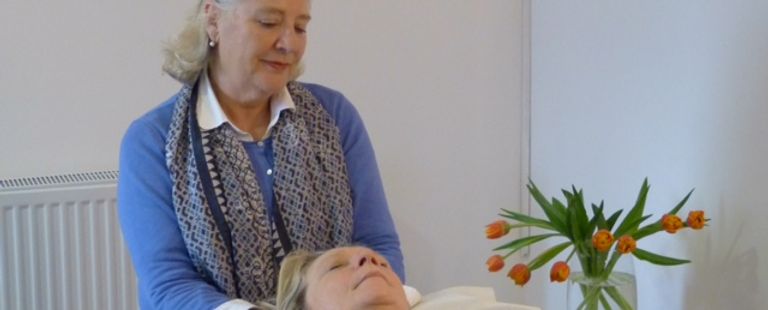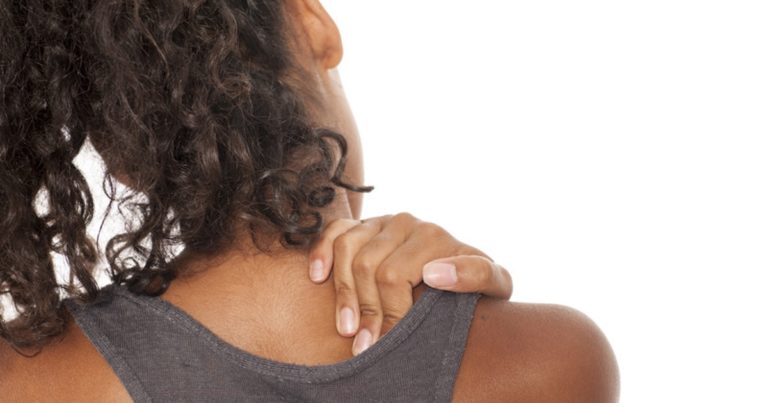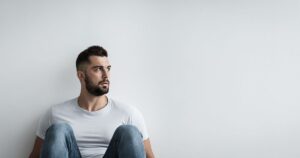Craniosacral Therapy (CST) is a gentle, hands-on approach that aims to release deep tensions in the body. Its purpose is to support relief from pain and dysfunction. It is a non-invasive approach and can enhance whole-body health, performance and a sense of well-being.
Singers and voice teachers are just as vulnerable as the rest of humanity when it comes to body pain and misalignment. They are often slouching at the piano tapping out scales or songs, or hunched over a computer keyboard doing admin or social media. Singing teachers who run group classes for excitable young singers may find themselves constantly yelling over the rabble and, as a result, find their larynx gets jammed up into their nose never again to return to its natural resting position. It’s not uncommon for a singer to complain of jaw (TMJD), shoulder or back pain as a result of general tension, choreography or lifting gear. Musical Theatre singers are particularly vulnerable to injury and repetitive strain due to their job requirements, wardrobe and needing to perform eight or more shows a week.
Personal experience
My decision to book a set of Craniosacral Therapy treatments stemmed from curiosity and the desire to work on my larynx, which has a tendency to sit high. I’d also noticed an increase in neck and back pain, as well as a sense that my shoulders were becoming “rounded”.
Here is a summary of my experience with this treatment.
I went through:
- A bout of sobbing and giggling.
- A shift in upper body alignment whereby my shoulders and neck area felt less rounded and more “upright”.
- A more balanced rib-cage posture (before, the left side always felt more raised than the right, but Craniosacral Therapy did even that out – as was my experience with Myofascial release. However, I did notice that it had reverted to being slightly “wonky” again after about five weeks in both cases, which I can note and address.)
- A slight lowering of the larynx resting position.
- Deeper mental and emotional insights, as well as some positive feeling surrounding my desires and ambitions.
My thoughts post this treatment are that other singing teachers and students might also find Craniosacral Therapy beneficial. Through bodywork (from the likes of Moshe Feldenkrais) and complementary therapies such as Craniosacral Therapy, we can create a better kinaesthetic relationship with our invisible vessel – something which is likely to impact positively on an exclusive bodily activity, such as singing.
Craniosacral Therapy is designed to correct alignment and to encourage optimum bodily function, sharing similarities with Myofascial release technique, reflexology and Feldenkrais methodologies.
I decided to interview my Craniosacral practitioner, Caroline Laurence, to learn more about this holistic therapy. In her practice, she treats sufferers of chronic fatigue, anxiety, Crohn’s disease, autism, TMJD, muscle, joint and skeletal issues and developmental disorders, as well as singers and professional voice users.

AT: Can you tell us a bit about you, and how your son played a role in your introduction to Craniosacral Therapy?
Caroline: My background is in nursing, which I greatly missed. I had a natural interest in health and had already become interested in a more holistic approach, which was still very unusual 30 odd years ago. My son was among the first children diagnosed with Asperger Syndrome, and at the time, there was no definitive approach to treatment. We were advised to let him join an anger management group, which was a disaster for him. I realise now that this was because many Asperger children have sensory integration problems. I then heard about the research of Dr John Upledger* into treating autistic children. He appeared to be having some good results in the US. The first training courses for practitioners were being set up in this country at this time, and the first ones were held in Edinburgh.
*Dr John Upledger is the recognised founder of Craniosacral Therapy
AT: You have treated animals with Craniosacral Therapy as well as humans; who are the people who usually seek out this therapy. What problems do they display?
Caroline: That’s a huge question. The only real contraindications for Cranial work is leaking cerebrospinal fluid or cranial bleeds or raised inter-cranial pressure. Outside of this, if people ask me if I can treat them, I usually suggest just seeing how they get on for three sessions and if they benefit we can continue. I treat people who present with physical and emotional issues. They are often linked, and it is often shifting the somatised issue which really benefits people.
AT: What does a Craniosacral treatment entail? Can you explain what Craniosacral rhythms, energy cysts and still points are?
Caroline: Cranial treatment is a very light touch, hands-on approach. The craniosacral rhythm is the rhythm of the pulse of the cerebrospinal fluid flowing through the system.
Energy cysts is a term coined by Dr Upledger to explain how we protect ourselves from being overwhelmed by emotional trauma. Just as a body can form a cyst around an infected area, we form a protective layer around emotional trauma. To a skilled CS practitioner, these can be sensed within the body. The only way I can describe it is to say that it feels like a gentle snag in the body. It is as if a silk scarf is caught on a rough surface. It’s very gentle and very subtle.
A Still-Point is another Upledger term. It describes how the body responds to either a sound, a thought or a physical or emotional experience. The craniosacral rhythm appears to slow down to such an extent that it feels if it has almost stopped. The sensitivity to this develops with the sensory skills of the practitioner.
AT: How often should someone have a Craniosacral treatment to feel the benefits?
Caroline: There are no strict rules or specific guidelines for this. I usually suggest that people come for three sessions and then work out from there how it would best suit them to have follow-up treatment. Some people find it beneficial to come for a few sessions and then leave it for a while. Others like to come on a regular basis as they enjoy it and find it beneficial. This can be anything from two weekly sessions to twice yearly. Many come back monthly, but it is really a personal choice.
AT: During my treatments, I felt very gentle rippling sensations localised to where your hands were focused, and you tapped into some “tired” energy stored in my body which led to you yawning consistently (hilarious!), What else might the patient feel? Is there anything that you’re looking for in particular as the practitioner?
Caroline: I’m not looking for anything specific and seek to remain aware of everything. The person in control of this process is the person on the table. Treatments can vary greatly from week to week; person to person. Different people have very different experiences. Many people see colours or feel sensations well away from where they are being treated. Often when people are being treated on their head, for instance, they may feel movements in their low backs. I’m always aware of compensating patterns and strains in the soft tissues. Feeling hot or cold during and immediately after treatment is common. Some people can also have a strong emotional response. This can vary from laughter to tears. Cranial work is often working with tissue memory. We remember feelings in the deepest and most profound ways. For instance, if I say to you “I’m eating a lemon”, your mouth will probably water – that is tissue memory. Or if you hear a clock ticking, it might remind you of your grandmothers home, where a clock ticked, which can open up a flood of deep and powerful memories. Sight and smell are also powerful holders of tissue memory.
AT: How does your training in psychotherapy, counselling and hypnotherapy complement your Craniosacral Therapy work? Do the two go hand in hand?
Caroline: It’s important to continually develop and broaden your skills as a practitioner and I have done a great deal of training in as many relevant fields as possible. It’s like filling your tool kit with as many and as varied selections of tools that you can find. Inevitably one finds ways that are more effective and that is part of the skill development. The Therapeutic Imagery and Dialoging course, which I have repeated, was one of the most useful I have ever done. I repeated my cranial training three times altogether, which has been invaluable. I did this once as a student and then twice more as a ‘teaching assistant’.
AT: The larynx is suspended from the hyoid bone, which is a bit of a grief hoarder. Can you explain how grief, trauma and anxiety can impact our alignment? How might this relate specifically to a singer and their vocal structure?
Caroline: Getting a lump in your throat is a common response to deep emotion, especially sadness, stress and anxiety. This sensation is caused by the hyoid bone pressing on the windpipe as the hyoid muscles become tense. The hyoid bone becomes higher and that will cause difficulties for the singer. Body posture will affect the position of the hyoid, especially the muscles of the face and the jaw, which can be affected by trauma in other areas of the body, which will impact on the hyoid and therefore the voice. A singer’s whole body is the instrument.
AT: Have you noticed any particular patterns when treating professional voice users?
Caroline: It is always very individual. I am reluctant to attribute any particular patterns or strains to singers.
AT: Some of your work focuses on the gut. How might Craniosacral Therapy help singers with acid reflux?
Caroline: Gastric reflux is a problem for many singers, and stress and tension is the chief cause for this. It is certainly worthwhile using very gentle cranial and visceral techniques to help and support the digestive system, which can also help give relief from these symptoms.
AT: A popular area of tension for singers is harboured in the articulators, and a lot of your focus is on working the mouth. How so?
Caroline: I have a particular interest in mouth work. I believe it to be key to treatment. If you think about how a small baby or child discovers the world: they mouth test everything! The most intimate human act is a kiss. The function, sensitivity and development of the mouth, and its relationship to structure and therefore soft tissue function is profound. None more so than for singers.
AT: What is your response to those who think Craniosacral Therapy is simply “woo woo”?
Caroline: I have no problem with that description. I come from a very conventional medical background. I know that as a student nurse, admittedly some 40 years ago, finding that any suggestion of anything unconventional was very worrying. This experience has left me very sympathetic to those who have not had direct experience of the more holistic and complementary approach. I often have to laugh to myself and think what a wonderful and exciting adventure I have had to get to this point. I would never have believed it possible all those years ago. Also, strangely enough, someone saying they think it is woo-woo does not mean that they do not find it beneficial. The most unexpected people have gained enormous help from treatment, and sometimes people I would have thought would “get it” easily, don’t. I have learned to be very open-minded and trust in the process. Belief systems are powerful things. There is no doubt those who have firmly made up their mind that it’s all rubbish or people who feel they cannot be helped, do have a problem.
From the therapeutic angle, it is often interesting to explore the whole issue of resistance. I do not favour “therapeutic speech”. I like to do it as more like chatting with intent. The way I work, this approach often works more effectively. Everyone has their own style and needs, so keeping an open mind is probably the most useful.
AT: How does Craniosacral Therapy fit into the medical environment?
Caroline: It helps greatly to have a medical background. Mutual respect is very important. I’m fortunate in that I work extensively with dentists, doctors, physios and health visitors. It’s understanding where other people are coming from that is important and recognising the importance of different approaches. I’m sure this will develop much more over the next few years. It is extraordinary how much things have changed in the last 25 plus years.
I would just like to add that I prefer to describe myself much more as a practitioner rather than as a therapist. The dictionary defines “Practitioner” as: a person actively engaged in an art, discipline, or profession, particularly in the medical field.
Throughout our lifetime our bodies take a battering, whether that be due to contact sports injury, medical disorders, habit or emotional responses – all of which can cause us to become wonky, shifted or even hunched like Quasimodo. Our bodies will catch whatever life throws at us, and some might just find Craniosacral Therapy to be a cathartic human-to-human comfort, as well as a way to build a stronger connection to our “self” as a whole.
Visit: caroline-laurence.co.uk
If you have any questions or comments you can find me and the BAST trainers in the BAST Facebook Group. To join click the button below.




